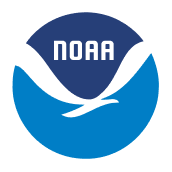HRRR-Cast unleashes AI for regional weather forecasting

NOAA’s Global Systems Laboratory (GSL) is breaking new ground in weather prediction with the development of HRRR-Cast, NOAA’s first data-driven, artificial intelligence (AI)-powered regional forecasting system. This innovative project, a key component of NOAA’s broader Project EAGLE (Experimental Artificial intelligence Global and Limited area Ensemble) system, represents a significant leap forward in the application of AI to environmental modeling at NOAA.
HRRR-Cast emerged from a collaborative effort, building upon the foundations laid by GSL, a leader in regional modeling. Recognizing the wealth of data provided by the flagship High-Resolution Rapid Refresh (HRRR) model, GSL researchers saw an opportunity to leverage emerging AI technologies to enhance forecasting capabilities.
HRRR-Cast, considered a data-driven sibling to HRRR, is an in-house AI model trained on a three-year dataset from the physics-driven HRRR. It began as an emulator, which reproduces the output of its training model, developed with a goal of matching the skill of HRRR.
Early results are proving to be promising. HRRR-Cast reflectivity forecasts out to 7 hours perform at least as well as the operational HRRR, with comparable performance out to 48 hours. HRRR-Cast also performs comparably to the operational HRRR in forecasting humidity, temperature, and wind, while producing realistic storm structure. In its current design, the number of vertical levels in the model limits the number of computed variables, but the success of this proof of concept motivates further expansion.
Recent refinements, including the integration of diffusion techniques enabled easy creation of ensemble forecasts through perturbations of initial conditions. Early tests of the HRRR-Cast Ensemble also show very encouraging results, which will be documented in an upcoming journal article.

Although AI-powered forecast models serve as powerful additions to the suite of model options, traditional physics-based models remain critical to advancing environmental prediction. Researchers believe that the future of forecasting lies with a hybrid approach using both physical and data-driven models, leveraging the improvements in computational efficiency that AI techniques provide. The computational efficiency of HRRR-Cast, for example, is two to three orders of magnitude greater than the operational HRRR.
“By leveraging high-resolution observations that help us better understand fine-scale physical processes, physical models can be improved, thereby improving the data on which AI-driven models are trained,” said Isidora Jankov, GSL’s Scientific Computing Branch Chief.

HRRR-Cast’s verification is being conducted using GSL’s in-house, easily portable application of the National Center for Atmospheric Research (NCAR)’s Meteorological Evaluation Tools (MET) system. GSL’s Dynamic Ensemble-based Scenarios for Impact-based decision support (DESI) system is being leveraged to display and interrogate the model output.
This groundbreaking initiative began as grassroots research in NOAA’s Office of Oceanic and Atmospheric Research (OAR) and gained momentum with strategic investments from GSL and the Office of the Chief Information Officer’s (OCIO) High Performance Computing & Communications Incubator and Scientific Engineering and Novel Architecture (SENA) programs. The project’s growth would not have been possible without this targeted support.
Key collaborators in the development of HRRR-Cast include the Cooperative Institute for Research in Environmental Sciences (CIRES, at the University of Colorado Boulder) and Cooperative Institute for Research in the Atmosphere (CIRA, at Colorado State University). Further collaborations in OAR extend to the National Severe Storms Laboratory (NSSL), which developed the storm-scale AI model WoFSCast, in addition to the Physical Sciences Laboratory (PSL), and the Weather Program Office (WPO). HRRR-Cast’s integration with Project EAGLE will be done in coordination with the Earth Prediction Innovation Center (EPIC).
Our Mission
Lead research and directed development through the transition of environmental data, models, products, tools, and services to support commerce, protect life and property, and promote a scientifically literate public.
Research Areas
Organizational Excellence, Earth System Prediction, Advanced Technologies, and Decision Support are the foundation to achieving the GSL Grand Challenge: Deliver actionable global storm-scale prediction and environmental information through advanced technologies to serve society.
Global Systems Laboratory

